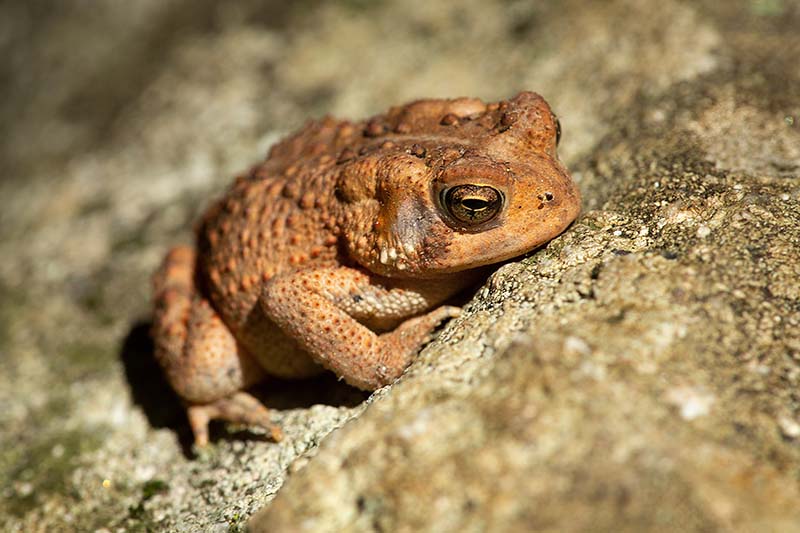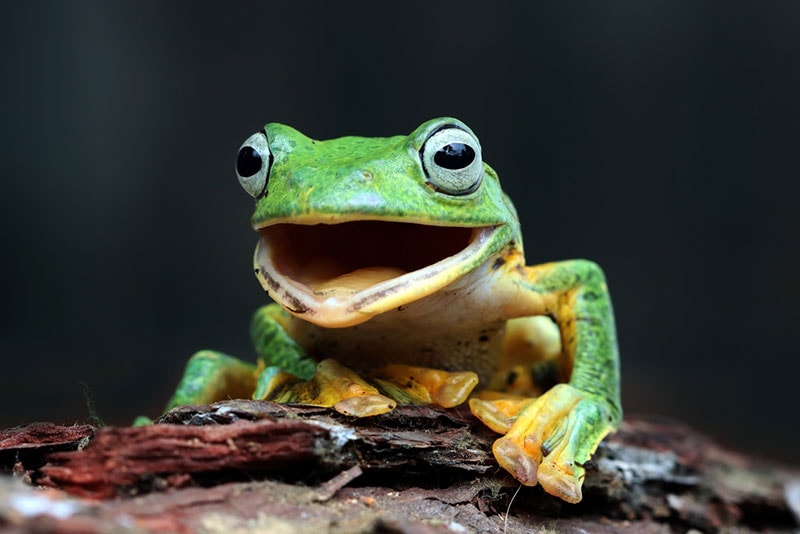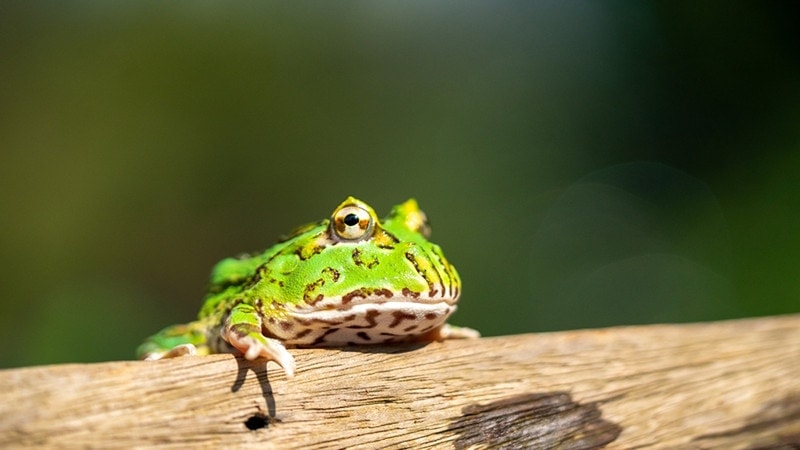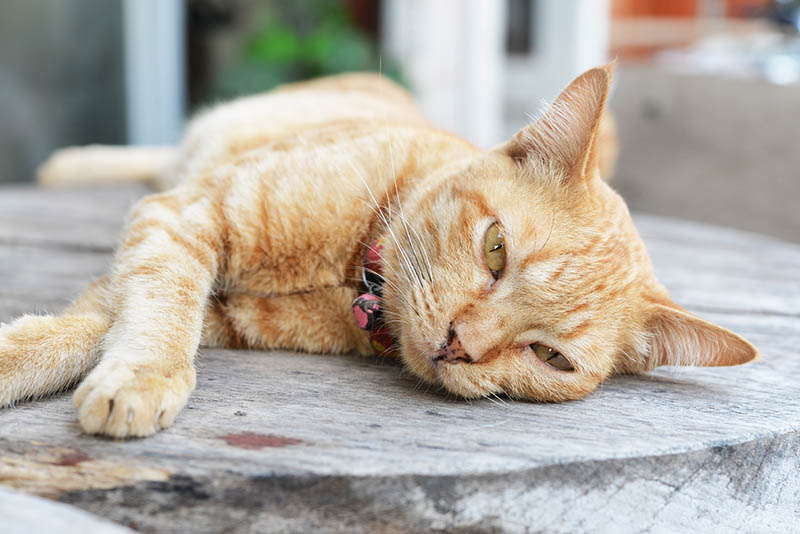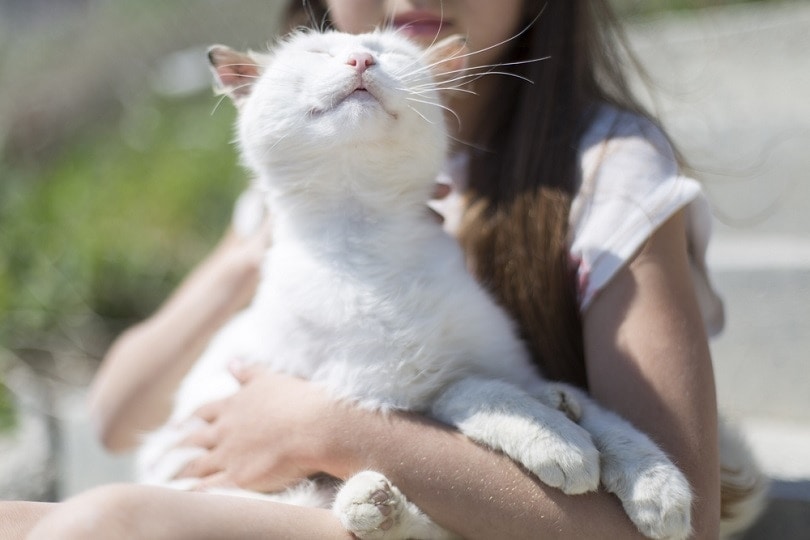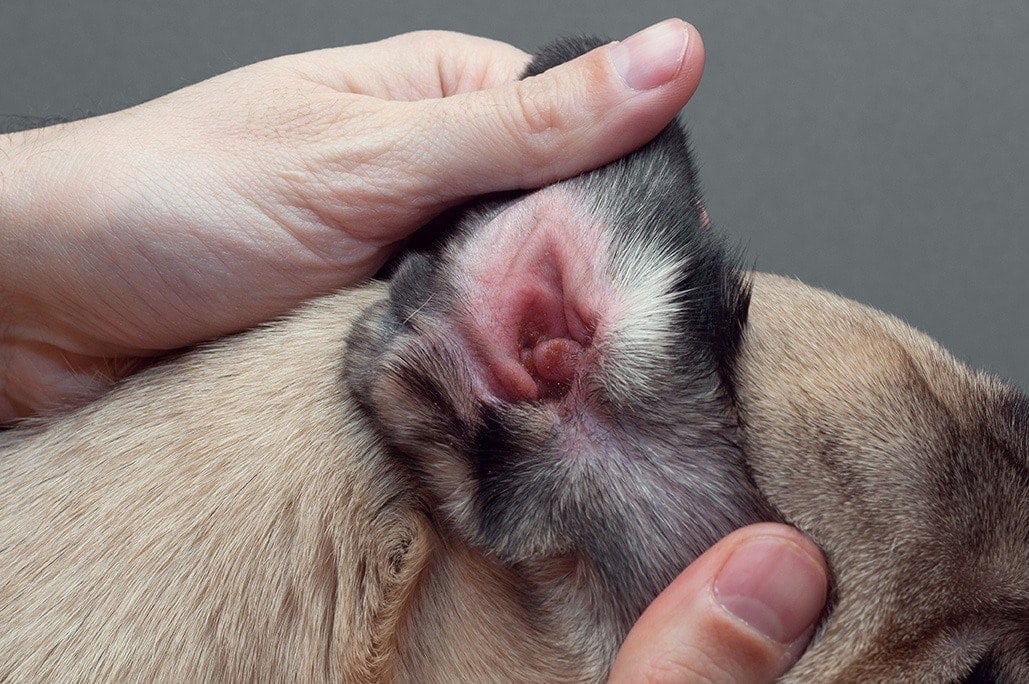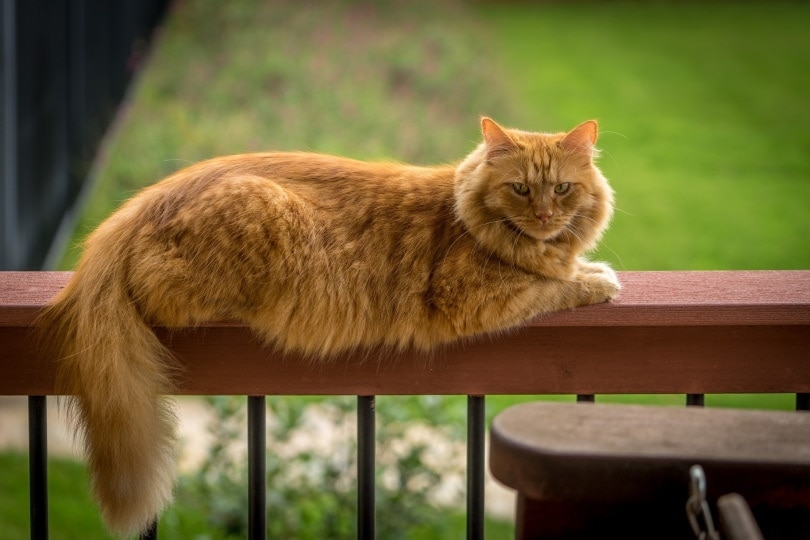Budgett Frog Care Guide: Lifespan, Diet, Pictures & More
Updated on
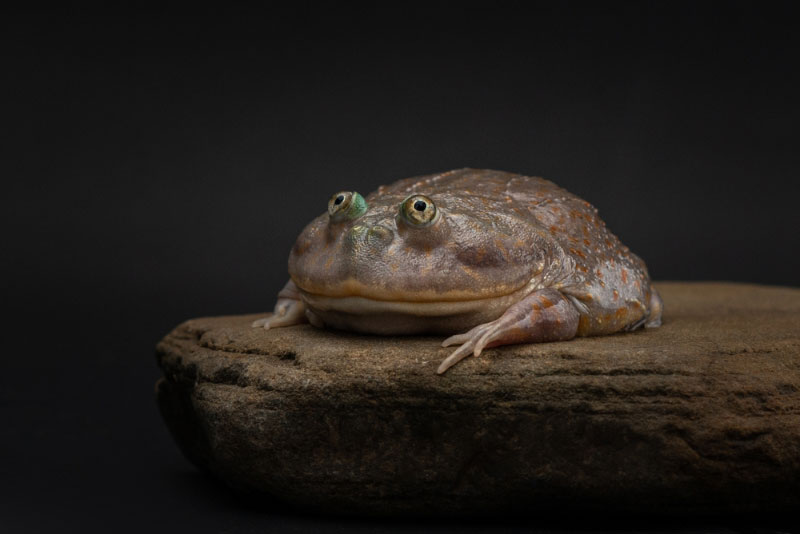
Also called the Paraguay horned frog or Budgett’s frog after the British zoologist who discovered them, the Budgett frog is one of the less popular amphibian pets out there. They’re larger than the average frog, have particular housing requirements, and sport a cantankerous personality to boot. If you’ve ever wondered about owning a Budgett frog yourself, you’ve come to the right place. Join us down below as we wade into what you need to set up a Budgett frog’s habitat and how to best care for this fascinating breed.
| Size: | 3.5–6 inches long |
| Lifespan: | 15–20 years |
| Color: | Brown, olive-green, gray-green |
| Suitable for: | Seasoned reptile/amphibian owners |
| Temperament: | Bold, inquisitive, aggressive |
| Diet: | Insects, fish |
| Tank Set-Up: | Half water, half potting soil mix with added peat moss for moisture retention |
| Minimum Tank Size: | 20 gallons |
| Suitable Tank Mates: | None |
Budgett frogs are sometimes called laughing frogs after their distinct call that sounds strikingly similar to a person laughing out loud. They’re also famous for their high-pitched scream, which is a defense mechanism when someone draws too close or tries to handle them. Along with the scream, the Budgett frog will puff up and try to make itself look unappetizing to potential threats.
Budgett Frog Breed Characteristics

Budgett Frog Overview
Budget frogs are pretty comical in appearance. After all, they’re pretty much all mouth. However, don’t let their silly looks fool you. These frogs are highly intelligent, as well as highly aggressive. Still, people enjoy having them as pets, but it takes a seasoned hobbyist to care for one.

Budgett Frog Cost
Budgett frogs are native to Central and South America, specifically Paraguay, Bolivia, and Argentina. While they’re not an endangered species, they’re less common than other frogs. Prices hover between $60 to $160 online, but prices near you may vary based on availability and competition. If only one place in town sells them, they can command higher prices than in places that have multiple sellers.
Care Guide & Tank Set Up
Tank Size
Budgett frogs are one of the larger frogs that people keep as pets, and they need a suitably large habitat—20 gallons should do the trick. If that seems large, it’s because a Budgett frog needs both land and aquatic environments in their tanks—roughly half and half, with water up to 9–12 inches deep. They’ll spend most of their time in the water anyway, but it’s important to give them enough space to explore with natural objects to hide behind on your land substrate.

Substrate
Budgett frogs prefer a moist but not soaking wet substrate for the dry side of their habitat. You can provide this by mixing potting soil with some sphagnum peat moss and a bit of gardening sand, but go light on the sand. Too much sand and specifically large particles can be a choking hazard, and so can gravel. Gravel, however, can be useful as a bottom draining layer of the habitat’s dry side. Leaf litter is another solid choice for a substrate and more closely mimics the Budgett frog’s natural habitat.
Humidity
Budgett frogs are humidity hogs and prefer it between 60% to 70%. You can monitor this with a hygrometer that sticks on the side of your tank, periodically misting the terrestrial side to help maintain humidity. The water in the habitat should go a long way toward keeping the humidity high too.
Lighting
Budgett frogs are nocturnal hunters that have no health or practical need for supplementary lighting, and too much can actually even be harmful to their health. In a pinch, you may use a heat lamp, but make sure to angle the direct light away from your Budgett frog. Indirect heating will work fine to warm the habitat if your home tends to run cool. Avoid under-tank heaters, which can get your frog too hot or even burn them if they burrow down to the bottom of the tank where the heater is housed.

Heating
Budgett frogs prefer temperatures from 75 to 77 degrees Fahrenheit, so supplementary lighting usually isn’t necessary. We still recommend adding a thermostat to your tank to monitor, as temperatures above 80 degrees can be fatally dangerous to Budgett frogs. Ventilation is very useful in preventing mold and fungi from flourishing in the tank and can be as easy as a fan pointed at the tank.
Things to Know When Owning a Budgett Frog:
Food & Diet Requirements
Budgett frogs are carnivores, and more interestingly, they’re carnivorous tadpoles that eat the tadpoles of other frog species too. In captivity, though, we primarily feed them a diet of insects because they’re widely available, easy to store, and packed with all the stuff your frog needs. Let’s take a closer look at some of the insects that comprise the typical Budgett frog diet, as well as some other acceptable dining choices.
- Dubia roaches
- Crickets
- Locusts
- Guppies
Water Requirements
Like other amphibians, the Budgett frog gets its water by soaking in fresh, clean water in their habitat. That makes a good aquarium filter invaluable, though you’ll need to monitor and periodically change the water since Budgett frogs are known for producing relatively high amounts of waste, and they can quickly dirty their water if you’re not on top of it. Budgett frogs are often called “hippo frogs” because they spend much of their time soaked up to the eyeballs and nostrils in water.
Size & Growth Rate
Juvenile Budgett frogs average around 1.5 to 2 inches in length, growing to their full adult size of 4 to 6 inches in just a year. When they’re younger, you can keep them in a smaller habitat with water 2 to 3 inches deep on the aquatic side. Once they reach their full size, though, you’ll want to upgrade to a larger tank so they have adequate space to burrow, soak, and hide.

Varieties
There are three main types of Budgett frogs: Lepidobatrachus laevis, the most common species, Lepidobatrachus llanensis, a smaller species with a more triangular head, and Lepidobatrachus asper, which is larger and sports large warts. All three species share the same aggressive personality but vary a bit in exact appearance.
Lifespan and Health Conditions
As pets, these frogs can live 15 to 20 years. However, there are still some health conditions that you’ll need to keep an eye on to ensure they live a long, healthy life.
- Fungal infections: Most common in overly humid habitats with poor airflow, minor fungal infections typically present as light flaky patches on the skin.
- Obesity: It can be hard to tell because of their bulbous body shape, but Budgett frogs are prone to overeating and need their food intake strictly regimented.
- Metabolic bone disease: Common among frogs, this disease occurs when there’s not enough calcium in the diet, leading to stunted growth, bone deformation, and death in severe cases.
- Fungal infection: Dangerous fungi like Chytridiomycosis can be deadly but are easily prevented by keeping your frog’s habitat clean and not too humid.
Male vs. Female
Unlike mammal species where males are larger than females of the same species, female Budgett frogs grow larger than their male counterparts. Females average between 5 to 6 inches long, while males lag behind at just 4.5 to 5 inches long on average. The other major difference of note is that males have a louder, deeper, and more resounding call than females.
3 Little-Known Facts About Budgett Frogs
1. They’re Cannibals!
Budgett frogs are one of a number of cannibalistic frogs, and they’re happy to feast on their own kind or other frogs from as early as the tadpole stage. In captivity, Budgett frogs are known to fight and even eat each other, which makes them best housed as solitary look-but-don’t-touch pets.
2. Their Skin Is Camouflage
The strange grayish coloring of most Budgett frogs can seem off-putting to us humans, but it’s just nature protecting them. This color emulates smooth river rocks like those found in the frog’s natural habitat in South America and helps them avoid predators in the wild.
3. They’re Related to the Pacman Frog
Budgett frogs are in the Ceratophryidae family of South American horned frogs, which includes dozens of species. Most notable is the Pacman Frog, another bulbous, grumpy cannibalistic frog that doesn’t play well with other frogs. The Pacman Frog is a more popular pet than the Budgett frog and may be a better pet for beginners to reptiles and amphibians.
Final Thoughts
Budgett frogs are fascinating creatures that are fun to observe, but they require an advanced habitat setup and don’t take well to being handled. If you’re after something closer to a passive pet, Budgett frogs are right up your alley, but experienced reptile owners will have the easiest time caring for one.
Featured Image Credit: tanya.asfir, Shutterstock

